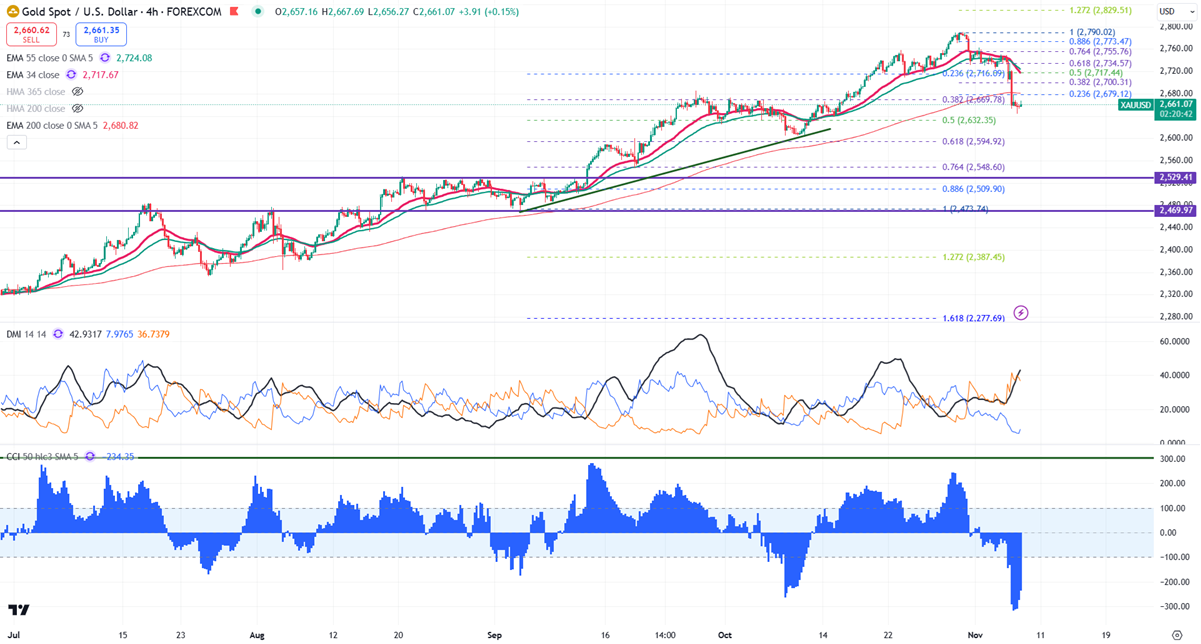Gold tumbled nearly $100 due to a surge in the US dollar and US treasury yields. It hit a low of $2652 yesterday and now sitting around $2,6665.
Gold futures dropped by 3% to about $2,673 per troy ounce shortly after Trump's election win. This decline is due to worries that Trump's policies could increase inflation, which would raise bond yields and strengthen the U.S. dollar. A stronger dollar usually makes gold less appealing as a safe investment. Bond yields and the U.S. dollar index are at four-month highs, making gold less attractive to buyers. As the dollar gets stronger, gold prices often go down.
Even though gold prices fell in the short term, analysts believe that gold could become more attractive in the long run. This is because ongoing trade tensions and uncertainties about inflation related to Trump's policies could drive more investors to gold as a safe option.
According to the CME Fed watch tool, the probability of a 25 bpbs rate cut increased to 97.40% from 94.80% a week ago.
Technical Overview:
Gold remains below both short-term and long-term moving averages on the 4-hour chart. The immediate support level is around $2650; a fall below this could lead to targets of $2632/$2600/$2590. A bearish trend would only be confirmed if prices drop below $2,470. On the upper side, minor resistance is found at $2,680, and breaking past this barrier could push prices up to $2700/$2725/$2735.
Current market indicators present bearish: the Commodity Channel Index (CCI) indicates a bearish trend, while the Average Directional Movement Index (ADX) suggests a bearish outlook.
Trading Strategy:
Consider making sell on rallies around the 2,700 mark, with a stop-loss positioned around 2,730 and a target price of $2600.



 Robinhood Expands Sports Event Contracts With Player Performance Wagers
Robinhood Expands Sports Event Contracts With Player Performance Wagers  Asian Fund Managers Turn More Optimistic on Growth but Curb Equity Return Expectations: BofA Survey
Asian Fund Managers Turn More Optimistic on Growth but Curb Equity Return Expectations: BofA Survey 





























